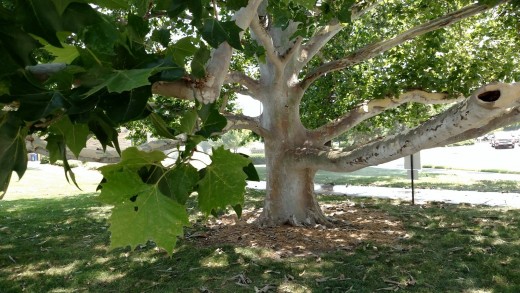The following article is by Ward Upham, Dept Horticulture and Natural Resources:
There are three situations we may run into regarding tree leaf loss this summer. The tree may produce yellow leaves scattered throughout the canopy of the tree, all the leaves on a tree may turn yellow and drop or the leaves may turn brown but stick to the branches.
If falling leaves are well distributed throughout the tree and result in a general thinning of the leaves, the problem is not serious. Trees will often set more leaves in the spring than they can support during the summer. Heat and drought stress will cause the tree to lose leaves that it cannot support with the available soil moisture. Leaves that drop are most often yellow with no discernible disease spots. However, at times, we can have green leaves drop that appear perfectly healthy. As long as the leaf drop results in a gradual thinning of the leaves, the tree should be fine if it is kept watered during dry periods.
In some cases we may see virtually all of the leaves drop. Certain trees such as hackberry can drop all of the leaves and enter summer dormancy. We are a bit early for this to occur but may happen later in the summer if the dry, hot weather continues. Trees that are summer dormant should have supple twigs and healthy buds. Usually, the effect on the health of the tree is very minor and the tree leafs out normally next spring. As long as the tree has enough stored energy reserves to make it through to next spring, it will survive. The twigs and buds tell the story. If the buds die and the twigs become brittle, at least that part of the tree is dead.
The last case involves trees that have leaves that die and remain attached to the tree. This can happen seemingly overnight. In such cases, the tree couldn’t keep up with moisture demands and died quickly. This year, the cause may be due to excessive rains this spring damaging root systems. As in the last case, the twigs and buds are the most important clue as to the health of the tree. As long as the buds are alive and the twigs are supple, do not remove the tree, it still has life.
If you limited ability to water and need to prioritize, trees should come first because they are the most difficult and expensive to replace. They also take the most time to reach an acceptable size.
Last week we had a couple of articles on watering trees. You can find those articles at: http://hnr.k-state.edu/extension/info-center/newsletters/2016/June21_2016_25.pdf (Ward Upham)






